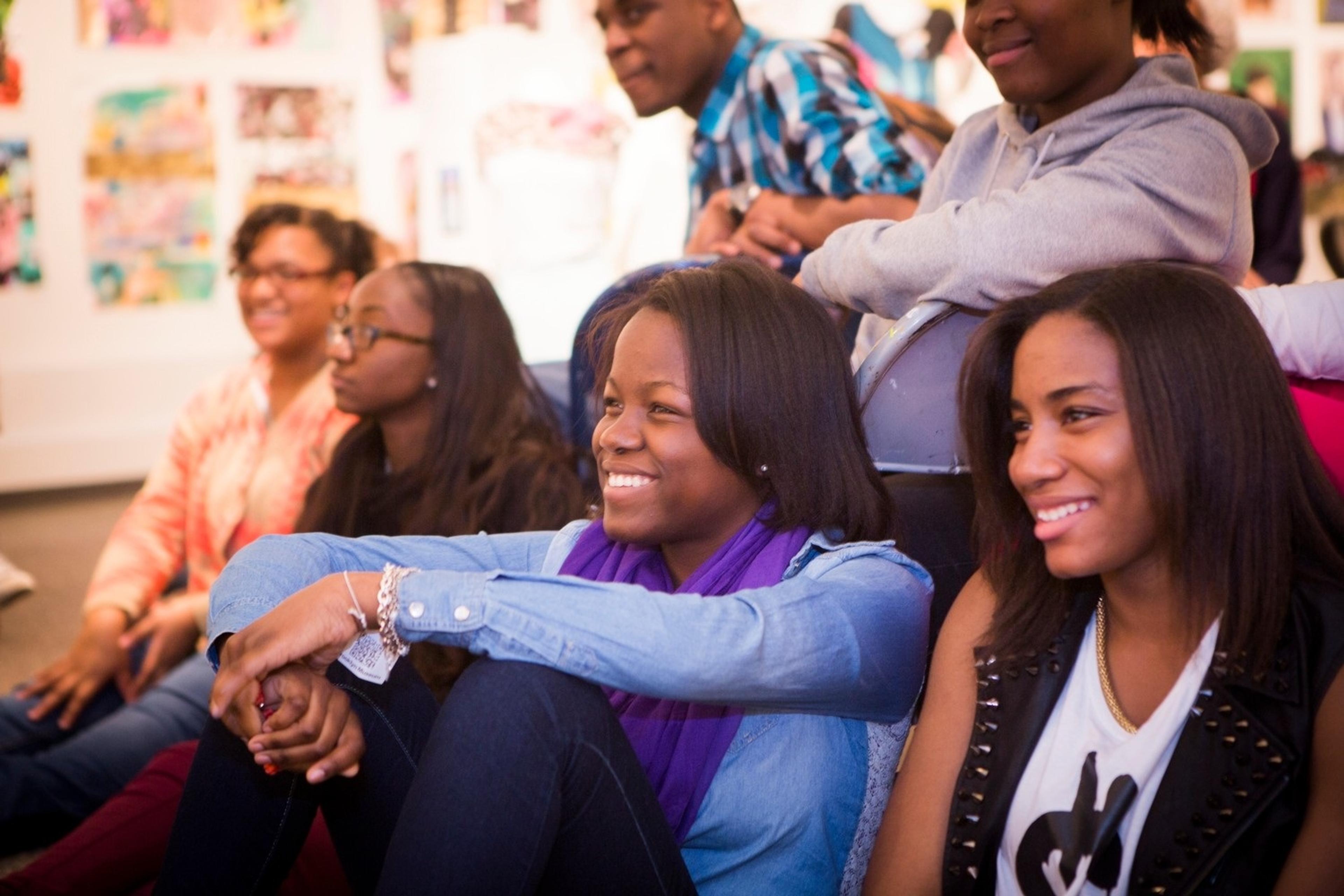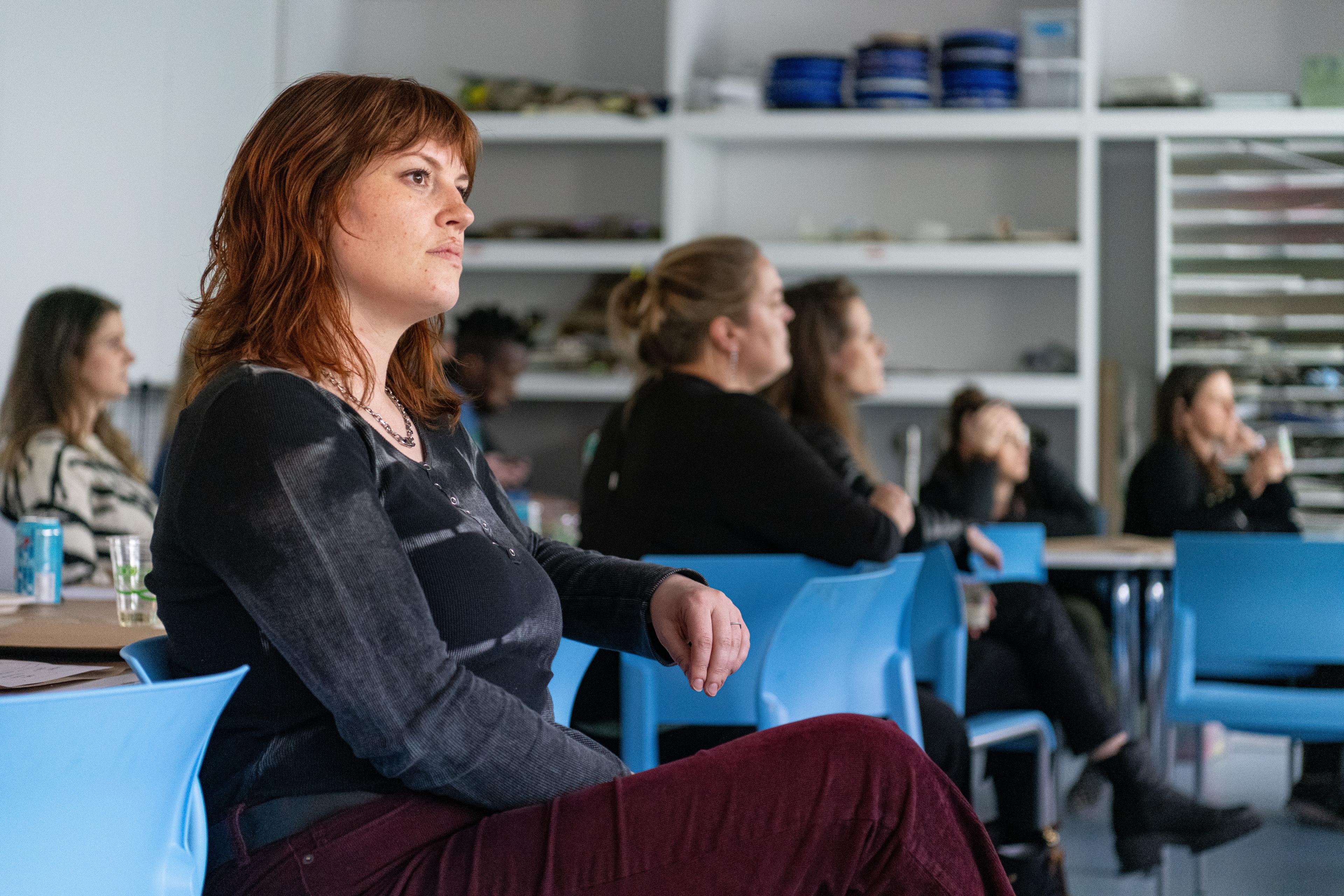K–12 Educators’ Guide to the Brooklyn Museum

The Education team weighs in with prompts and exercises for teachers leading students through the Museum.
by Makda Amdetsyon, ray ferreira, Stacey Kahn, and Michael Reback
June 12, 2024
Each year, more than 30,000 students and teachers visit the Brooklyn Museum. On any given day, you might overhear a group of third graders talking about the afterlife in ancient Egypt or a high school class discussing art and identity in front of paintings. The Museum offers a range of opportunities for schools and educators to engage with the collections and exhibitions, including one-off Guided Visits, multisession School Partnerships, and teacher professional development.
Educators can also opt for a self-guided visit, allowing you to create your own gallery experience for students. If you’re not sure where to start, this guide offers quick tips for K–12 teachers across grade levels, including how to prepare for your visit and how to engage students with artworks in the Museum’s collection.
Before your trip:
Explore what’s on view by checking out current exhibitions and the collection online. If possible, visit the Museum to map out your route.
Review the Museum’s community agreements with your class.
Introduce the collection through teaching resources.
Book your visit online before bringing a class. At least two weeks’ notice is required (but space fills up quickly, so sooner is better!).
Lobby
Along the Way, Contemporary Art
Students may note that this sculpture looks familiar: Along the Way, an 18-foot sculpture by Brooklyn-based artist KAWS, references childhood characters and toys. The scale of this work speaks to the monumental influence that brands and childhood objects have on our lives. The two cartoon-like characters’ pose, with their arms wrapped around each other, speaks to their friendship.
Ask your students what the crossed-out eyes might symbolize: A transition out of childhood? Game over? Maybe they’re deep in a dream state and sleepwalked their way into the Museum?! All interpretations are welcome.
2nd Floor
Cizhou Ware Pillow in the Form of a Tiger, Arts of Asia
How can animals in art symbolize other ideas? Ask students to guess what type of animal is represented in this ceramic pillow. Then have them discuss a few questions: What kinds of qualities do you associate with tigers? What might a tiger symbolize? In China, tigers are associated with strength, bravery, and protection from evil spirits—so why might someone want a tiger on their pillow?
After your discussion, have students consider their own characteristics and think about what animals they might use to represent themselves.
3rd Floor
Pair Statue of Nebsen and Nebet-ta, Egyptian, Classical, Ancient Near Eastern Art
Artworks can help us learn about the beliefs and values of people in ancient Egypt. Nebsen and Nebet-ta, the husband and wife represented in this statue, hoped that visitors to their tomb would leave things like food and clothing so that the couple could take those items into the afterlife.
Have students look carefully at the figures and consider the following: What are they wearing? How are they posed? What else do you notice about their appearance? Ask students to imagine how much work went into carving this artwork, and share that only certain people in ancient Egypt could afford a statue like this one. What does this say about ancient Egyptian society? What connections might there be between the ancient Egyptians and us?
4th Floor
Red Blue Chair, Decorative Arts and Design
How do artists incorporate elements of design into functional objects? Ask your students to choose a shape, color, or texture and search the Decorative Arts and Design galleries for examples of that design element. When they’re finished, have them share a few of their findings.
Then, look at a single work together and discuss the artist’s design choices. This chair, for example, combines affordable materials with bright colors and bold geometric forms. Are these elements decorative or functional? How do they impact the finished product?
5th Floor
The Mellow Pad, American Art
The Mellow Pad, painted by Stuart Davis in 1945–51, references the innovation and excitement of jazz just a few decades after the Harlem Renaissance brought it to the forefront of American life. Ask students to notice the lines, colors, and shapes. Based on what they see in the painting, which adjectives would students use to describe jazz? Would they use the same words or different ones to describe the feeling of New York City?
When you get back to the classroom, play jazz, and have students make their own abstract drawings inspired by what they hear.
Other words of advice
Ready for your field trip? Here are a few final tips to make sure your time at the Museum goes smoothly.
Don’t try to see everything in one day! Instead, stick to one or two exhibitions, or focus on a single theme across collections.
Bring pencils and sketchbooks so students can take notes, make drawings, or do activities while you explore the Museum. (No pens, markers, or other messy materials, please!)
Remember that food, beverages, and backpacks will need to be left at Coat Check, so pack light!
Hungry after your visit? Students can have lunch in the outdoor sculpture garden, the front plaza, or one of the parks nearby.
Book your visit today. See you in the galleries!
Michael Reback is Senior Manager of School Programs at the Brooklyn Museum, working with Makda Amdetsyon (School Programs Fellow), ray ferreira (Associate Manager of Guided Visits), and Stacey Kahn (Associate Manager of School Partnerships).







